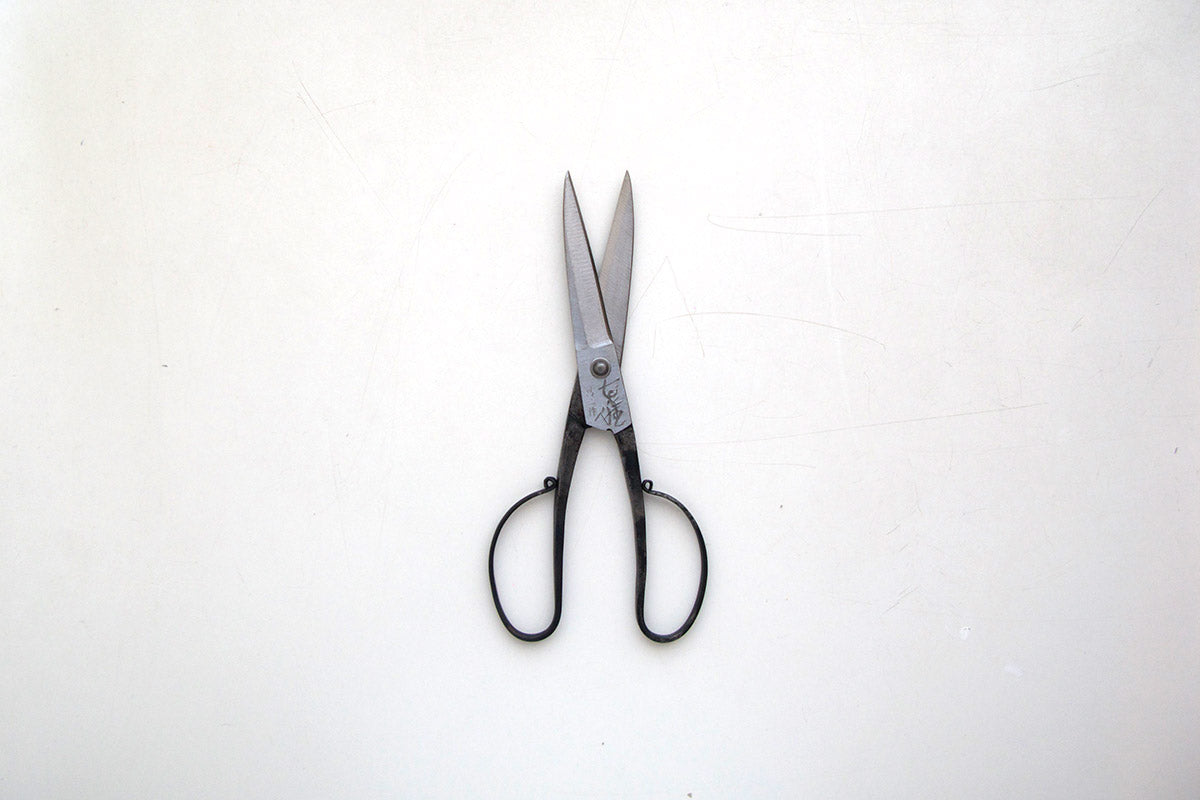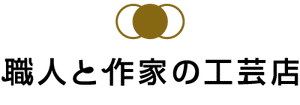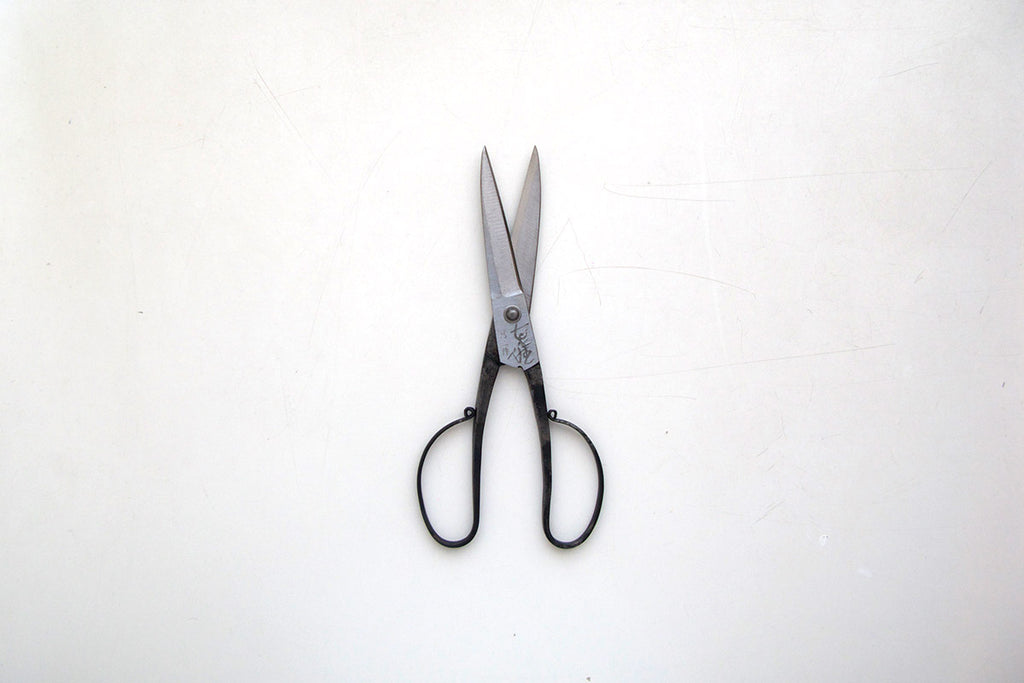
梅木本種子鋏製作所 本種子鋏 6寸

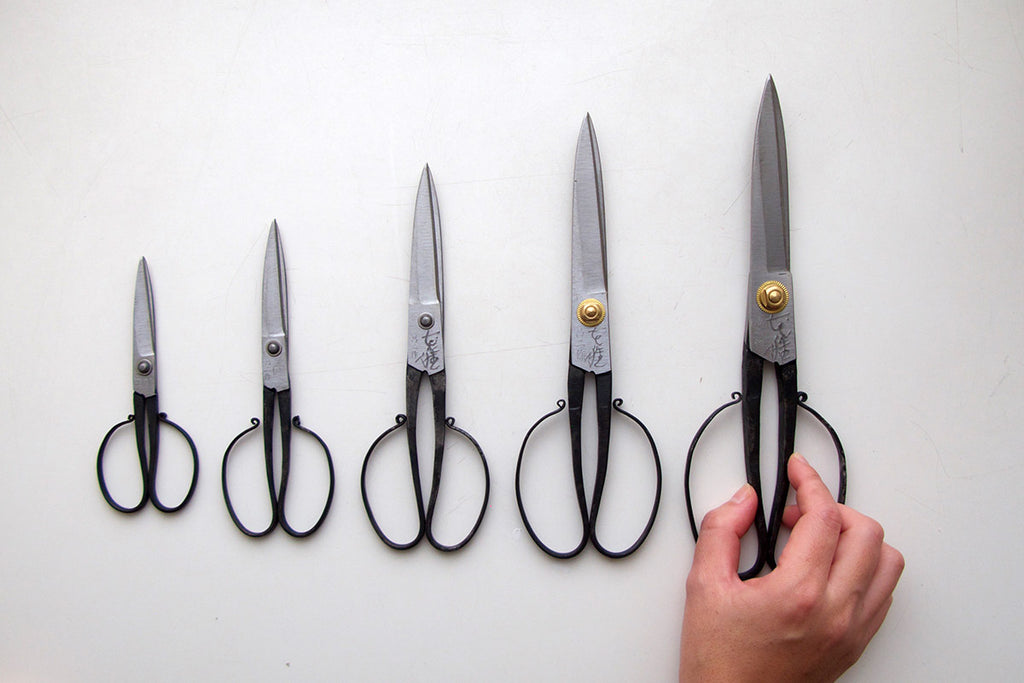
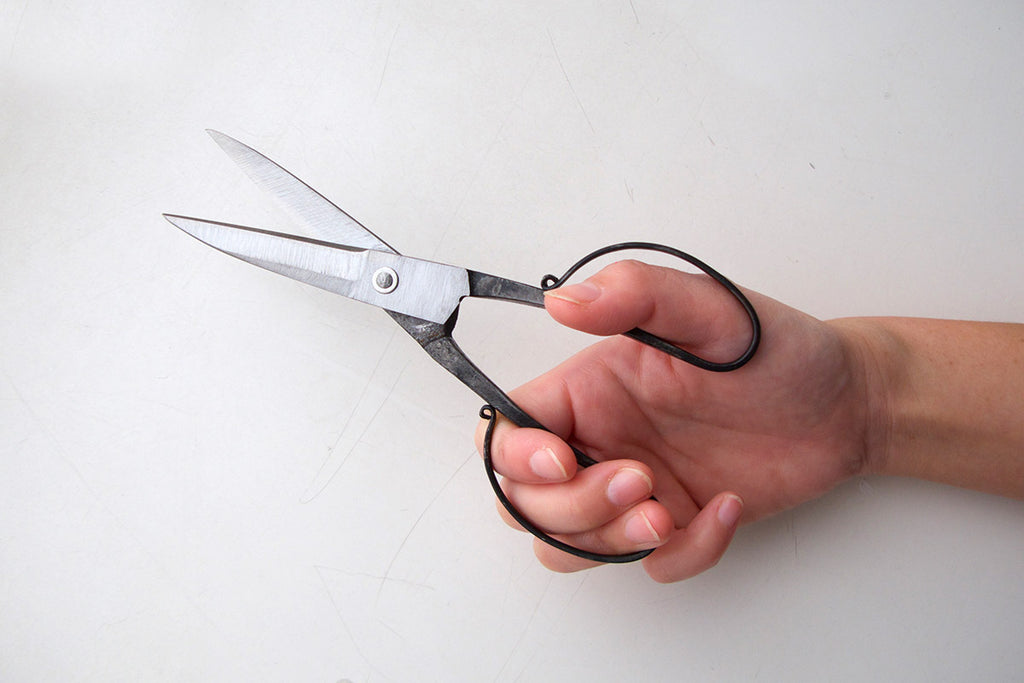
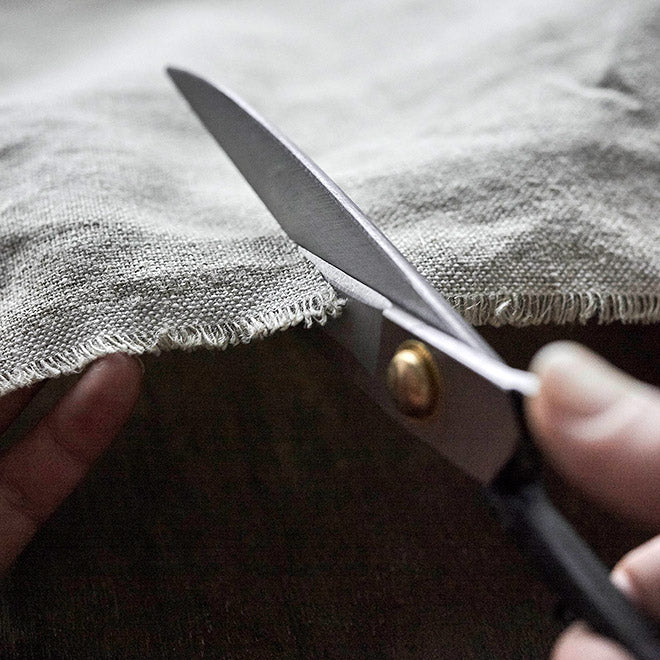
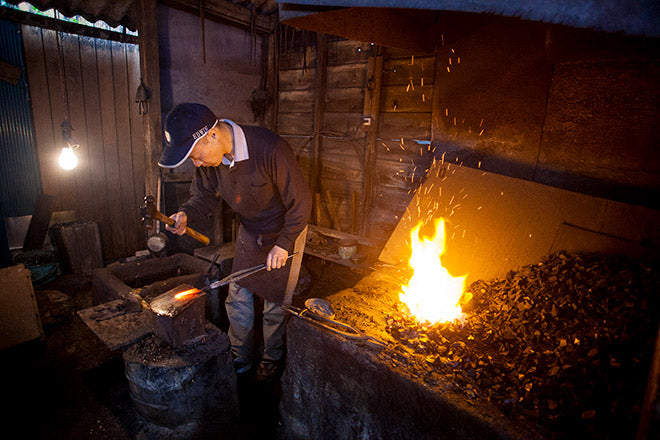
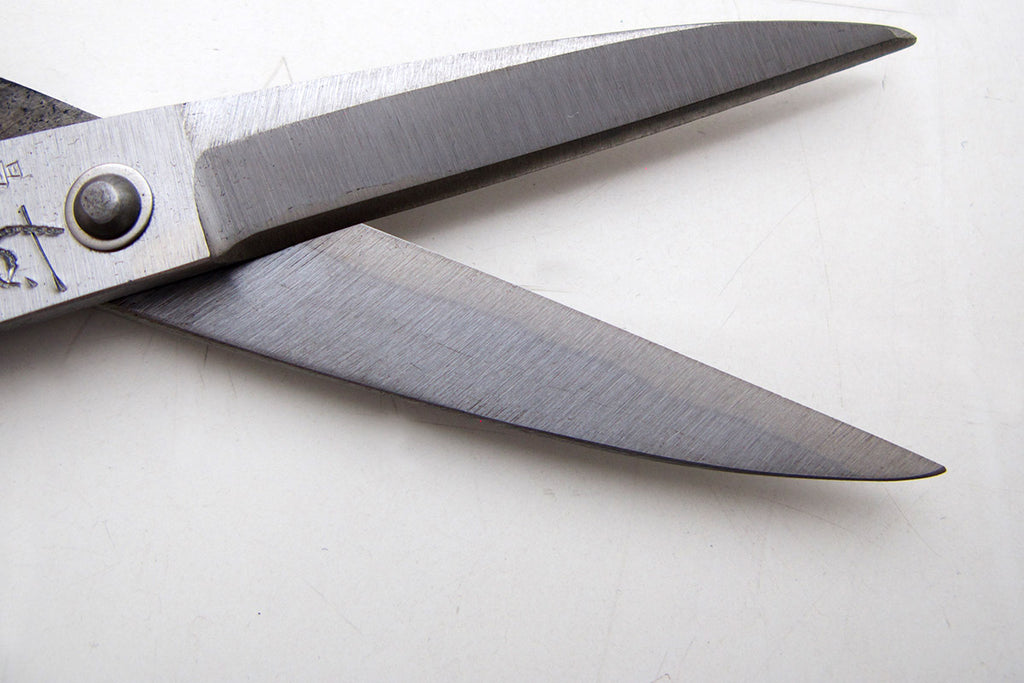
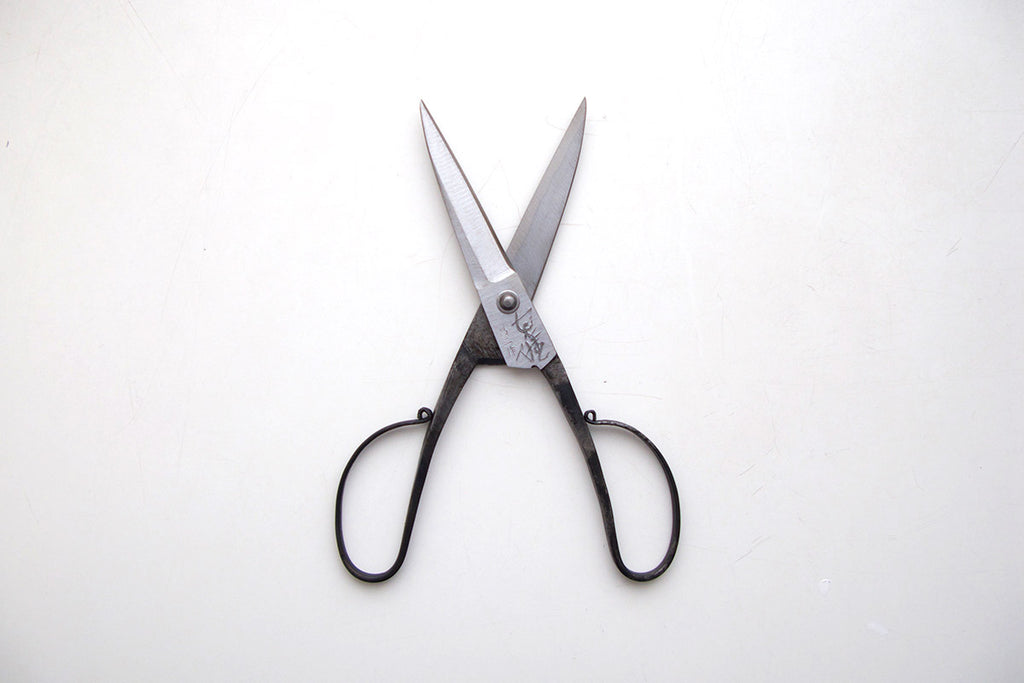

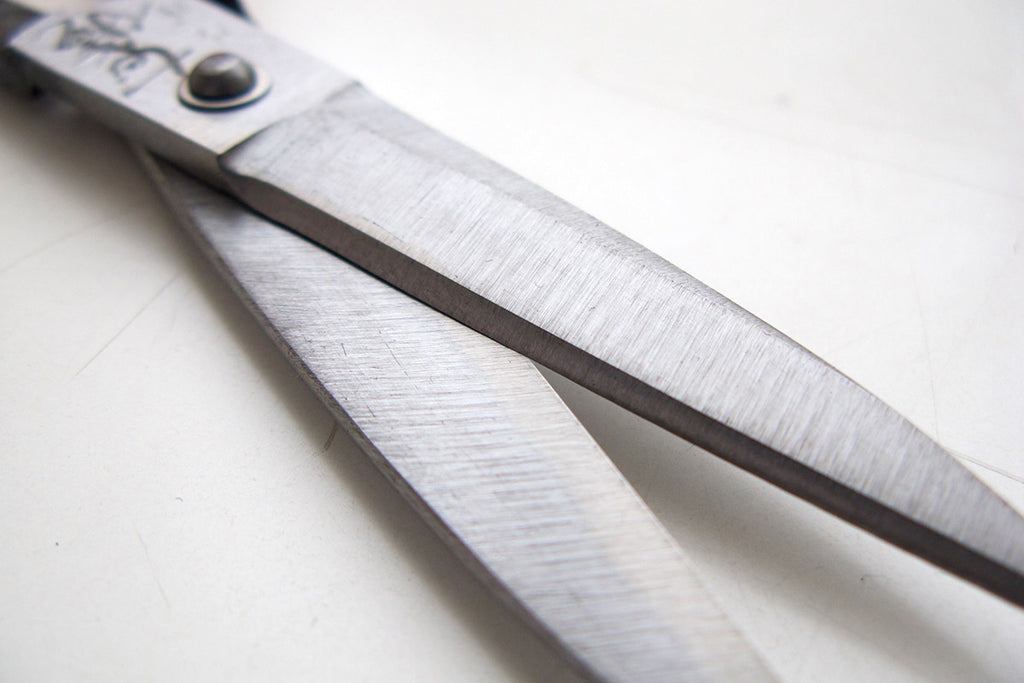

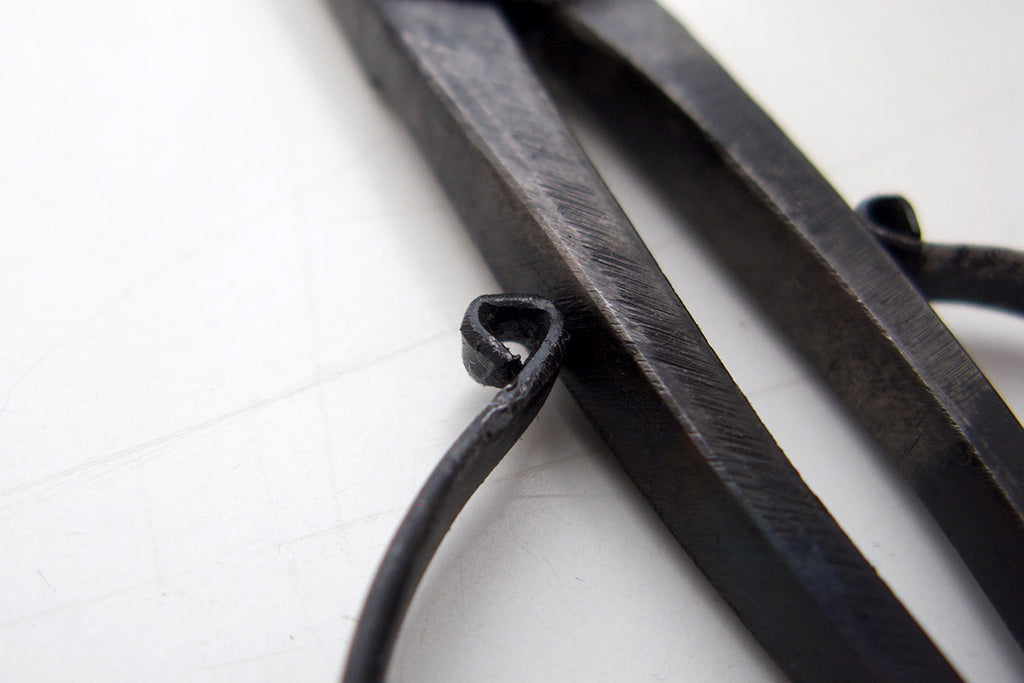
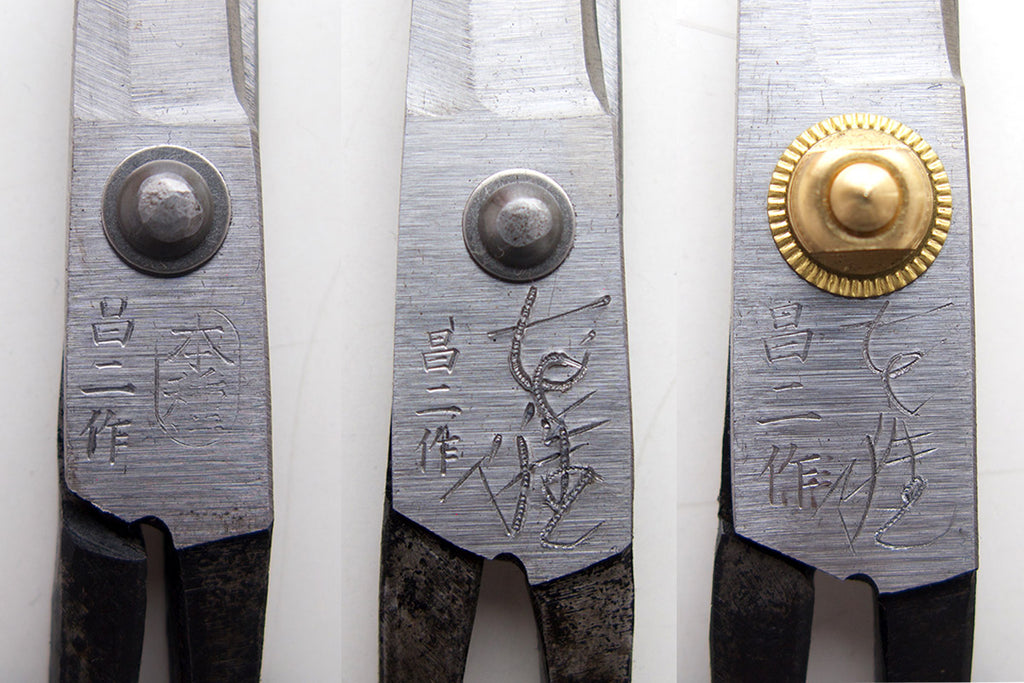
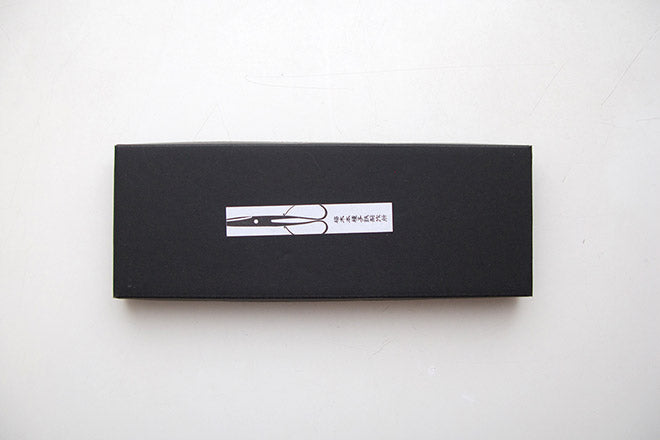
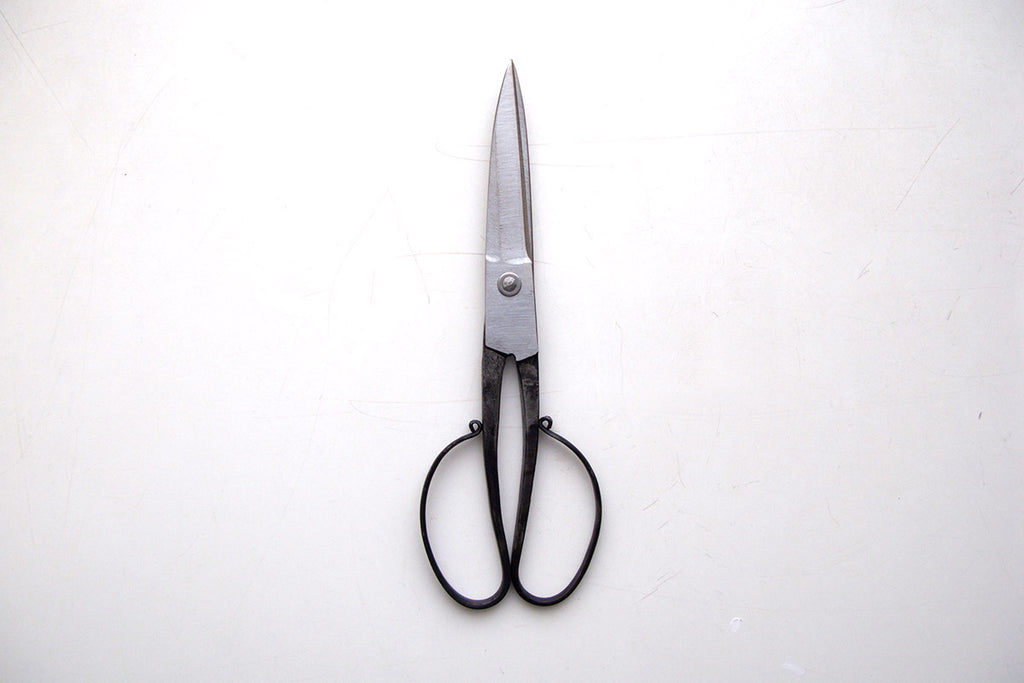
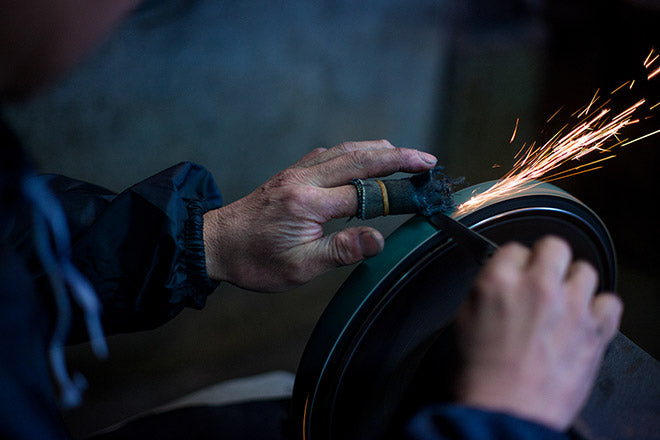
梅木本種子鋏製作所
Umeki Hontane Scissors Factory | Hontane Scissors 6 inches
在庫数: 12[出荷予定日]
Orders placed before 5pm will be shipped within 2 business days
 The 6-inch Hontane Scissors are made by blacksmith Umeki Shoji of the Umeki Hontane Scissors Factory.
Umeki's scissors are very rare and are completely hand-forged, starting from the forging process.
The 6-inch Hontane Scissors are made by blacksmith Umeki Shoji of the Umeki Hontane Scissors Factory.
Umeki's scissors are very rare and are completely hand-forged, starting from the forging process.The traditions and techniques of making genuine tane scissors have been preserved for generations by the Makise family of blacksmiths. The Makise family has a long history, beginning as swordsmiths, and after guns and central-fulcrum scissors were introduced, they became gun and scissors smiths, with over 1,000 years of history spanning from the first generation of swordsmiths to the 37th generation.
However, the 37th head of the Makise family, Yoshifumi Makise, passed away in 2016. The history of the Makise family has come to an end, but currently, Shoji Umeki, the only disciple of the 37th head of the family, has inherited the traditional techniques and continues to make Hontane Scissors using the traditional manufacturing techniques.
Today, Umeki is the only person who can preserve the traditional techniques of making hontane scissors and carry out all processes by hand.
 [From left: 4 sun, 5 sun, 6 sun, 7 sun, 8 sun]
[From left: 4 sun, 5 sun, 6 sun, 7 sun, 8 sun]You can choose from 5 sizes depending on your needs.
The most distinctive feature of these scissors is their twisted blades, called "neri." This "neri" system sharpens the blades every time they meet at a single point. These wonderful scissors are designated as a nationally selected intangible folk cultural property (folk technique) and a traditional craft of Kagoshima Prefecture.[4 sun (12 cm), blade length 45 mm] Suitable for cutting tasks using only the tip, such as cutting threads.
[5 sun (15 cm), blade length 55 mm] For small cutting and cutting fabric.
[6 sun (18 cm), blade length 65 mm] The perfect size for a wide range of uses.
[7 sun (21 cm), blade length 85 mm] For cutting items the size of a newspaper.
[8 sun (24 cm), blade length 100 mm] As a pair of scissors. Great for cutting fabric.
This page introduces the 6 inch seed scissors.
 [Genuine seed scissors 4 inch]
[Genuine seed scissors 4 inch]There are two outstanding features of this seed scissors.
・Completely hand-forged scissors made by layering steel and base metal- A twisted blade called "neri"
 [8-inch genuine scissors for cutting fabric]
[8-inch genuine scissors for cutting fabric]Completely hand-forged scissors made from forging
The completely hand-forged scissors are made by layering steel and base metal in a process called forging, in the same way as Japanese swords are made. The scissors are tempered and forged to create an exceptional sharpness.Forge welding requires the skill and experience of a craftsman, and it is said to be very difficult to get the temperature right and the force to apply. If you don't do it properly, the metal will peel off, and if you apply too much force, it will stick too well. It is a very delicate and time-consuming process.

 [The irregular wavy pattern at the boundary between steel and iron is only possible because it is hand-forged]
[The irregular wavy pattern at the boundary between steel and iron is only possible because it is hand-forged]Making hard and resilient scissors
Hardening and tempering the scissors creates a hard, resilient pair that is resistant to breaking. It is said that only about three pairs of scissors can be made per day, as they go through many processes.
A twisted blade called "neri"
The most distinctive feature of the seed scissors is the twisted blade called "neri."While the blades of ordinary scissors are made parallel to each other, Umeki's genuine seed scissors are bent in a smooth arc so that the blades meet at a single point. This "kneading" creates an outstanding sharpness and allows you to cut with less force.
And it gets sharpened every time you cut.
As you close the scissors, you can feel the blades rubbing against each other, sharpening them. This "kneading" process means that there is no need to sharpen the blades for years, and their sharpness will last a lifetime.
 [Using the "neri" technique, when the scissors are closed there is a gap and they are only connected at the central fulcrum]
[Using the "neri" technique, when the scissors are closed there is a gap and they are only connected at the central fulcrum]  [As you close the scissors, you can hear them sharpening as they close]
[As you close the scissors, you can hear them sharpening as they close]Black and bold handle
The black handles, with their bold appearance, are made using a technique of hardening using rapeseed oil, which is also a gunsmithing technique that has been passed down for generations. Leaving the blackened surface of the hardening process intentionally helps prevent rust. These scissors are very attractive and have an excellent design.

Inscription
Finally, Umeki carves a signature to prove that it was made, and the piece is complete. [Left: 4 sun, 5 sun / Middle: 6 sun / Right: 7 sun, 8 sun]
[Left: 4 sun, 5 sun / Middle: 6 sun / Right: 7 sun, 8 sun]Also great as a gift
These carefully handcrafted Tanegashima scissors have been treasured as wedding gifts and other celebratory items since ancient times, as the two blades of the scissors rub against each other, symbolizing the idea that "two people should carve out their own path in life together." The scissors will be delivered in an elegant package.
Care instructions
Iron scissors are prone to rust. If you are concerned about rust, we recommend wiping them with a cloth soaked in oil or tissue paper after each use before storing them.If you try to remove the rust yourself, the knife may no longer be able to cut. If you are concerned about rust, we recommend that you ask Umekimoto Tanegashima Seisakusho to resharpen it.
Even if these seed scissors become rusty, the cutting edge is constantly sharpened, so they will not become extremely dull unless the rivet part (screw) at the fulcrum becomes loose.
 [Genuine Seed Scissors 6 inch Back]
[Genuine Seed Scissors 6 inch Back]Resharpening
To ensure that you can use the knife for a long time, Umeki will provide sharpening and maintenance services. The round-trip shipping fee and maintenance fee will be borne by the customer, but we will provide resharpening and maintenance. If you would like this service, please contact us.
 Umekimoto Tanegashima Scissors Factory has a workshop in Tanegashima, Kagoshima Prefecture. Yoshifumi Makise, the 37th head of the family who had been protecting the traditions and techniques of Tanegashima scissors, passed away in 2016. Currently, Shoji Umeki, the only apprentice to the 37th head, has inherited the traditional techniques and is the only craftsman who can still make Tanegashima scissors using the traditional production techniques.
Umekimoto Tanegashima Scissors Factory has a workshop in Tanegashima, Kagoshima Prefecture. Yoshifumi Makise, the 37th head of the family who had been protecting the traditions and techniques of Tanegashima scissors, passed away in 2016. Currently, Shoji Umeki, the only apprentice to the 37th head, has inherited the traditional techniques and is the only craftsman who can still make Tanegashima scissors using the traditional production techniques.Click here for a list of works by Umekimoto Tanegahasa Seisakusho
Click here to see the work in progress.
[The history of seed scissors] In 1543, a Portuguese ship washed ashore on Tanegashima and brought guns with it, and at the same time, a blacksmith from China on board brought the technique of making scissors with a central fulcrum to the island's blacksmiths. Tanegashima has long been famous for its high-quality iron sand, and swordsmiths from all over Japan migrated to the island in search of high-quality iron, with many skilled craftsmen living on the island competing with each other in their forging techniques. In this way, scissors were made alongside sword and gun manufacturing, and after the sword ban was abolished, scissors became the main business, and eventually became a traditional industry on the island.
Until the early Showa period, many blacksmiths would ring out the sounds of their hammers early in the morning, but as time passed, the sounds of hammering disappeared. Now, only one blacksmith, Umekimototane Scissors Factory, still makes scissors by hand, one by one, using the traditional manufacturing technique inherited from swordsmiths, the forge steel manufacturing method (forge welding).
It's the perfect size for a wide range of uses.
[Product name] Seed scissors 6 inches
[Package size (approx.)] W217 x D80 x H22mm
[Product size (approx.)] Total length 18cm (blade length 65mm) x D60mm
[Material] Steel, iron
Weight (approx.): 84g
[Country of Origin] Japan
[Notes] Designated as a nationally selected intangible folk cultural property (folk technique). Designated as a traditional craft of Kagoshima Prefecture.
● Precautions for use
-Iron scissors are more prone to rust than stainless steel scissors.
To prevent rust as much as possible, wipe the item with a cloth soaked in oil or tissue paper after each use before storing it.
・The blade has been specially processed using a process called "neri." If you try to sharpen or remove rust yourself, the blade may become dull.
●Please be sure to check before purchasing.
-These scissors are made of iron, so there will be a slight smell of iron on your hands after use.
・As all items are handmade, there may be individual differences in size, weight, color, unevenness, shape, etc.
Please enjoy this as a unique feature of this product, which is unlike any other in the world.
Please be aware of the above before making your purchase.

